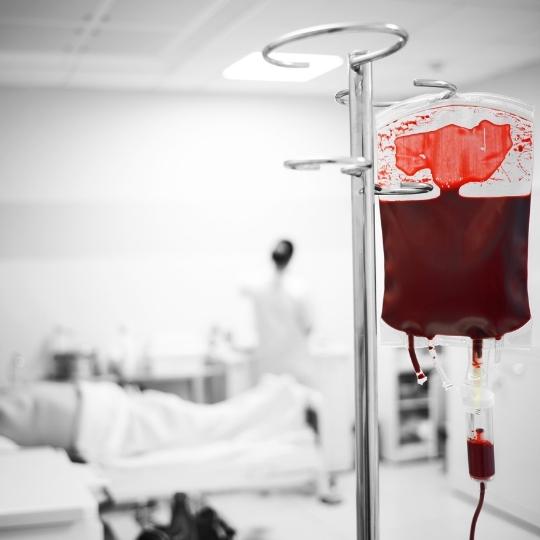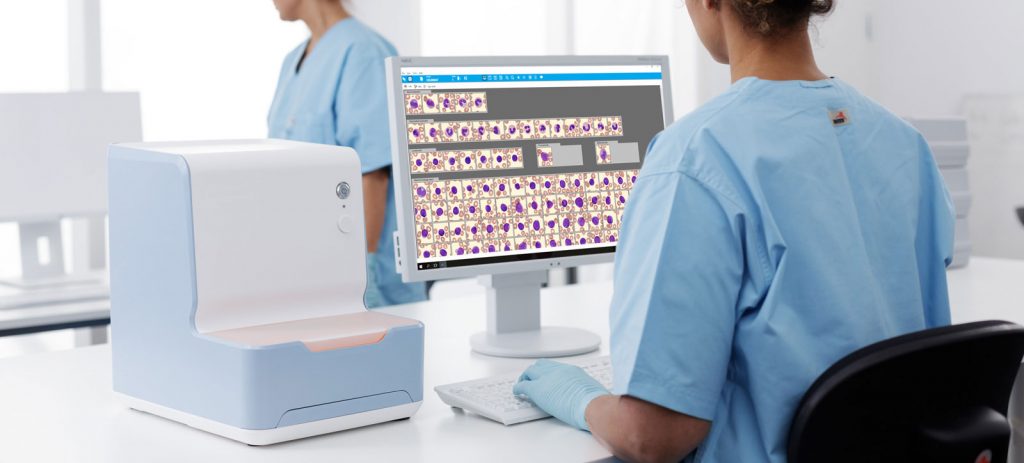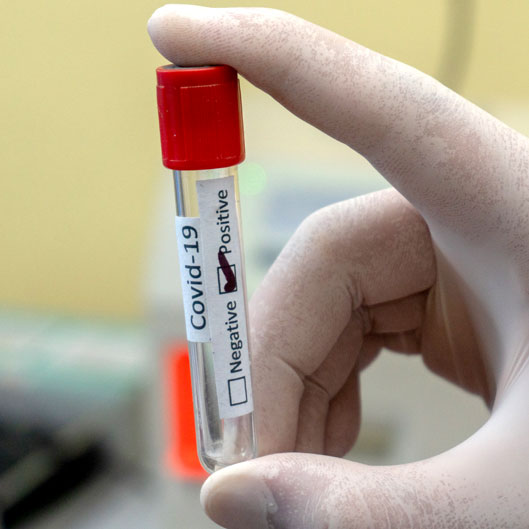TA-GVHD, Irradiation & Leucodepletion: Lessons Learned & Future Directions

Necessity is the mother of invention, a phrase that best describes the evolution of blood product manipulation. This phrase is especially true for irradiation and leucodepletion to prevent a potentially fatal condition, Transfusion Associated-Graft versus Host Disease (TA-GVHD). Several deaths brought about the need for such manipulation as a consequence of blood transfusion.
What is TA-GVHD?
TA-GVHD is a rare and potentially fatal complication of blood transfusion that occurs typically 2 weeks after the transfusion of cellular blood components. It presents with classical signs of fever, erythema, maculopapular rash, diarrhea, elevated liver enzymes & hepatosplenomegaly. It was first described in 1965 as “postoperative erythroderma,” mainly after cardiac surgery and in children with congenital heart disease1.
What causes TA-GVHD?
Multiple factors contribute to the pathophysiology of TA-GVHD related to the component and recipient.
Component related:
- Cellular blood components (red blood cells, platelets, and granulocytes)
- Number of lymphocytes
- Viability of the lymphocytes
Recipient related:
- Immune competency of the recipient
- HLA disparity, where the immune-competent recipient will not be able to recognise the donor lymphocytes as foreign because they share some HLA haplotypes
The viable donor lymphocytes will mount an immune response against the recipient tissue leading to cytokine production and lymphocyte proliferation. This causes bone marrow aplasia and profound pancytopenia, which is typically the cause of death.
Who is at risk?
In general, immun0-compromised patients with impaired cellular immunity are at most risk. Haematology patients, including stem cell transplant patients, patients with Hodgkin lymphoma, or patients receiving purine analogues (e.g. pentostatin), are at the highest risk. Recent British Society for Haematology guidelines2 also identified patients undergoing chimeric antigen receptor T-cell (CAR-T) therapy at risk. The guidelines2 recommend irradiated blood components are provided 7 days before harvest and 3 months following CAR-T cell infusion.
Non-immunosuppressed patients can also develop GVHD, especially if the blood components transfused are derived from an HLA-haploidentical unrelated donor or family member. Infants with congenital familial hemophagocytic lymph histiocytosis are also at risk.2
How do leukodepletion and irradiation help?
Targeting donor lymphocytes is the primary method to prevent TA-GVHD, either by elimination, inactivation, or both.
- Elimination = leucoreduction/ filtration/ depletion, preferably pre-storage, significantly decreases (by >99%) the number of viable lymphocytes to <5 × 10^6 leucocytes per unit in >99% of the units & <1 × 10^6 per unit in 90% of the units with 95% confidence.
- Inactivation = irradiation of the viable lymphocytes causes permeant DNA and RNA damage. There are different technologies available, including:
- Gamma Irritation is widely available with long experience, and the risk of caesium emission has provoked the movement for other less risky technologies.
- X-ray irradiation is comparable to gamma irradiation, with fewer safety concerns.
Lessons Learned
Results of the 10-year SHOT review showed that despite reporting 784 incidents and 2809 non-irradiated component transfusions in at-risk patients, no cases of TA-GVHD were reported. Communication errors, the complexity of shared care, and knowledge gaps may fail to identify patients at risk. Missed irradiation in 79.9% was due to patients receiving a purine analogue or with a diagnosis of Hodgkin lymphoma HL3. These challenges in practice explain why some hospitals implemented a universal irradiation policy for haematology-oncology wards and neonatal and paediatric intensive care units at the price of not missing a case at risk of TA-GVHD.
Conversely, this review raises several questions. The first is whether current leucofiltration technologies are sufficient in preventing TA-GVHD? The second is whether the provision of irradiated cellular blood products for any particular indication is still required?
The answer to the first question is the long-standing UK experience which has shown an 83.3% reduction in cases of TA-GVHD after the implementation of leucofiltration in 1999. From 12 cases before to 2 cases after implementation.
For the second question, the review has stimulated the need to re-evaluate the need for lifelong provision of irradiated blood products to Hodgkin lymphoma patients and neonates post-transfusion exchange or following intrauterine transfusion. A good number of non-irradiated transfusions have occurred without the development of TA-GVHD.
Lessons Learned
Irradiation doesn’t come without drawbacks. These include storage, shortened red cell unit shelf-life, additional costs, and the operational complexities of addressing who needs it and providing it successfully each and every time. In addition, leucodepletion has become a universal practice in many parts of the world. It has shown proven efficiency in substantially reducing the number of viable lymphocytes and, hence, TA-GVHD risk. In addition, different pathogen reduction technologies for platelets, plasma and red cells have shown promise at inactivating T-cells.
Will all of this preclude the necessity for irradiation in the future? Let’s wait and see.
References
- Hathaway WE, Githens JH, Blackburn WR, Fulginiti V, Kempe CH. Aplastic anemia, histiocytosis and erythrodermia in immunologically deficient children. Probable human runt disease. N Engl J Med. 1965;273(18):953-958. doi:10.1056/NEJM196510282731803
- Foukaneli T, Kerr P, Bolton-Maggs PHB, et al. Guidelines on the use of irradiated blood components. Br J Haematol. 2020;191(5):704-724. doi:10.1111/BJH.17015
- Elliot J, Narayan S, Poles D, Tuckley V, Bolton-Maggs PHB. Missed irradiation of cellular blood components for vulnerable patients: Insights from 10 years of SHOT data. Transfusion. 2021;61(2):385-392. doi:10.1111/TRF.16189

Want to learn more about haematology?
See our available courses! Our exclusive courses make learning easy.
Accredited by the Royal College of Pathologists (UK).





